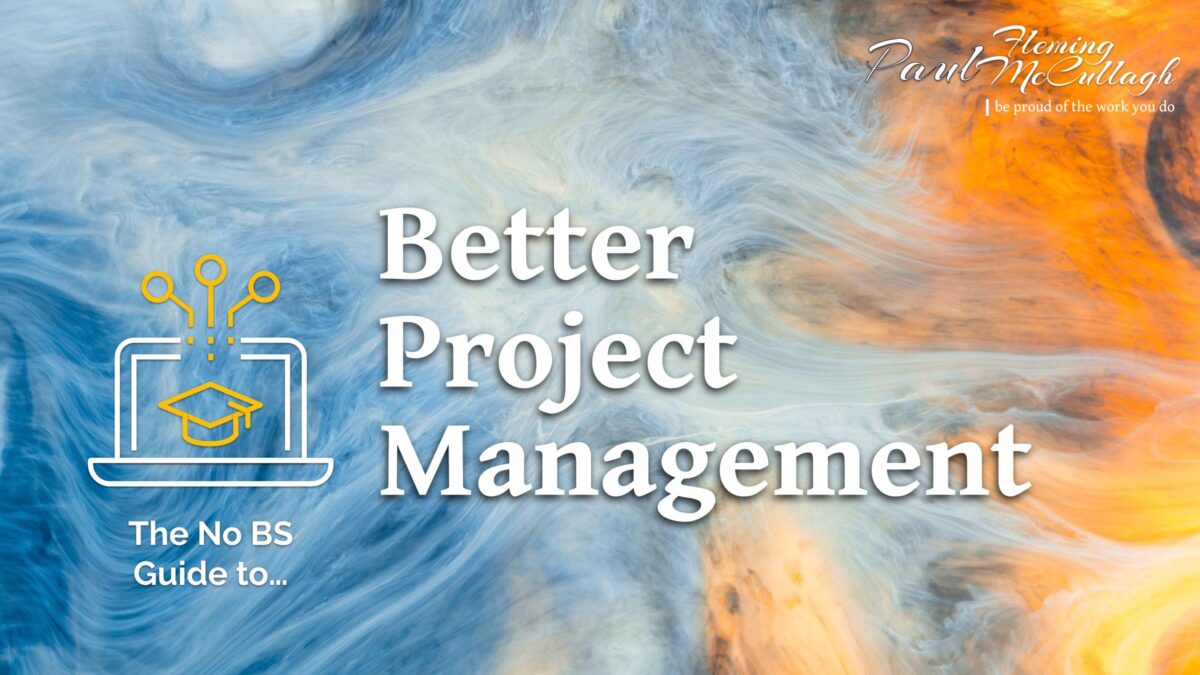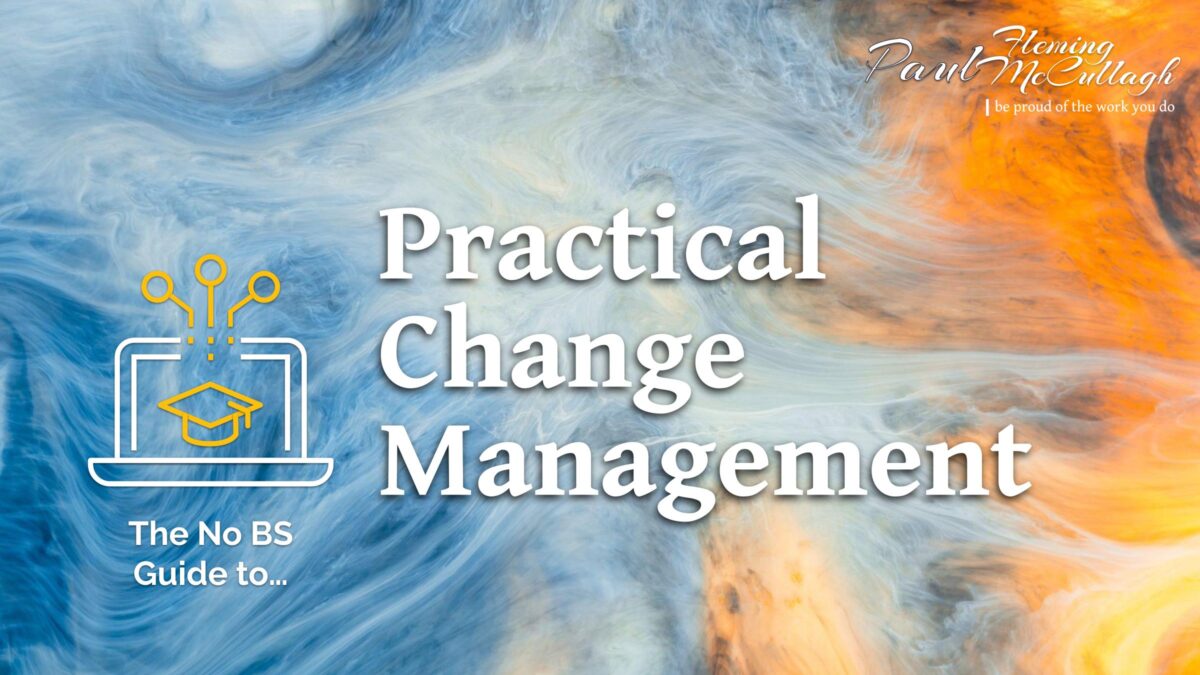Let’s start with a question: what is project management?
Is it a never-ending series of templates and dashboards, beloved of faceless bureaucrats with clip-boards, or is it a repeatable framework that facilitates project work and encourages the successful delivery of an end product?
It’s really the latter, but many see it as the former.
At its heart, project management is:
- Organizing the work
- Removing roadblocks so the team can do their work
- Keeping everyone up to date so there are no surprises
- Then doing those activities project after project in a repeatable fashion
A handy way to think of project management is you Organize & Guide, Do & Deliver the work that creates an end product.
This No BS Guide to Better Project Management shares how to put Organize & Guide, Do & Deliver into practice and deliver the end product your client needs when you said you would deliver it, and how to do it within budget.
Better Project Management Contents
- Know What You Do on a Project
- Organize the Project Work
- Guide the Project Work
- Do the Project Work
- Deliver the Project Work
- What’s Next?
- Final Thoughts for Better Project Management
Know What You Do on a Project
The first step in better project management is understanding your role and how it fits into the grand scheme of office life.
Before you know how to lead a project, it pays to know what’s expected of you. For example, knowing the difference between a Project Manager and a Change Manager reduces confusion and ambiguity around responsibilities and activities.
This starts by knowing what type of person you are. Successful project managers are personable, professional, organized, and most important of all, someone who follows through on their promises.
Now, do you know what you do in the office and where your responsibilities lay? Chances are, you’re wearing at least one of these hats or maybe multiple:
- A Business Analyst defines the problem and helps provide requirements for the solution.
- The Project Manager is responsible for the successful delivery of the solution and organizes the work the team performs.
- A Change Manager generates excitement and support for the solution.
- The Team Manager develops their team’s strengths and encourages collaboration with other teams.
- An Executive guides and grows the organization and its people by setting a direction and supporting projects.
Now you know which role(s) you have, the next section shares how to take the project charter and list of requirements and turn them into an executable plan and, ultimately, a successful solution.
Organize & Guide, Do & Deliver
A project has two parts, an administrative and a functional side, each complimenting the other.
Administrative project work – Organize & Guide – creates the achievable project plan, helps it stay on track, and keeps everyone up to date.
The functional side – Do & Deliver – is where the agreed upon work to create the result, is done.
As the person responsible for the project’s success, you Organize the work so everyone understands what’s needed; Guide the project so everyone understands what’s happening; help the team Do the work and Deliver the sprint, phase, or end product
The aim is to simplify how you manage your projects so you can successfully plan and deliver the solution, product, or feature your boss or client has asked for. The result of a successfully delivered project is your clients’ want to work with the team again and the team wants to work with you again.
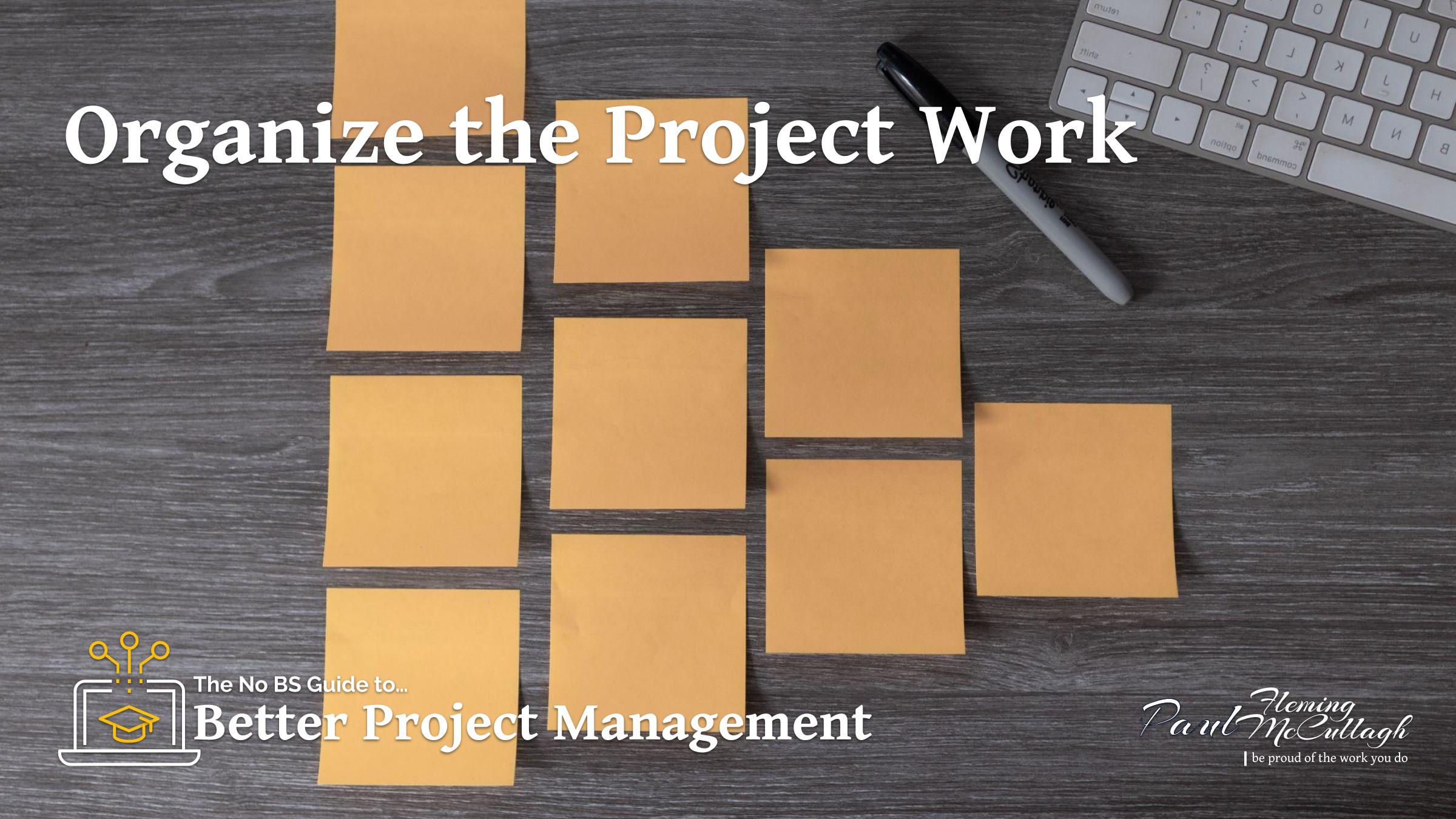
Organize the Project Work
Everyone involved understands what they need to do, how they’re going to do it, and when it needs to be done by.
- Prioritize the work and consider dependencies, time constraints, and deadlines outside of your control.
- Look into any risks or opportunities to your team, workload, and the overall project. Plan to mitigate or take advantage accordingly.
- Organize the work into chunks that are clear, easy to follow, and achievable with sprints and phases.
- Assign the right tasks to the right people and make sure everyone understands their assigned work.
- Collaborate with your project team and key stakeholders to plan out the work and timing. This ensures the team is working on the right features at the right time, and builds trust and confidence in you and your abilities.
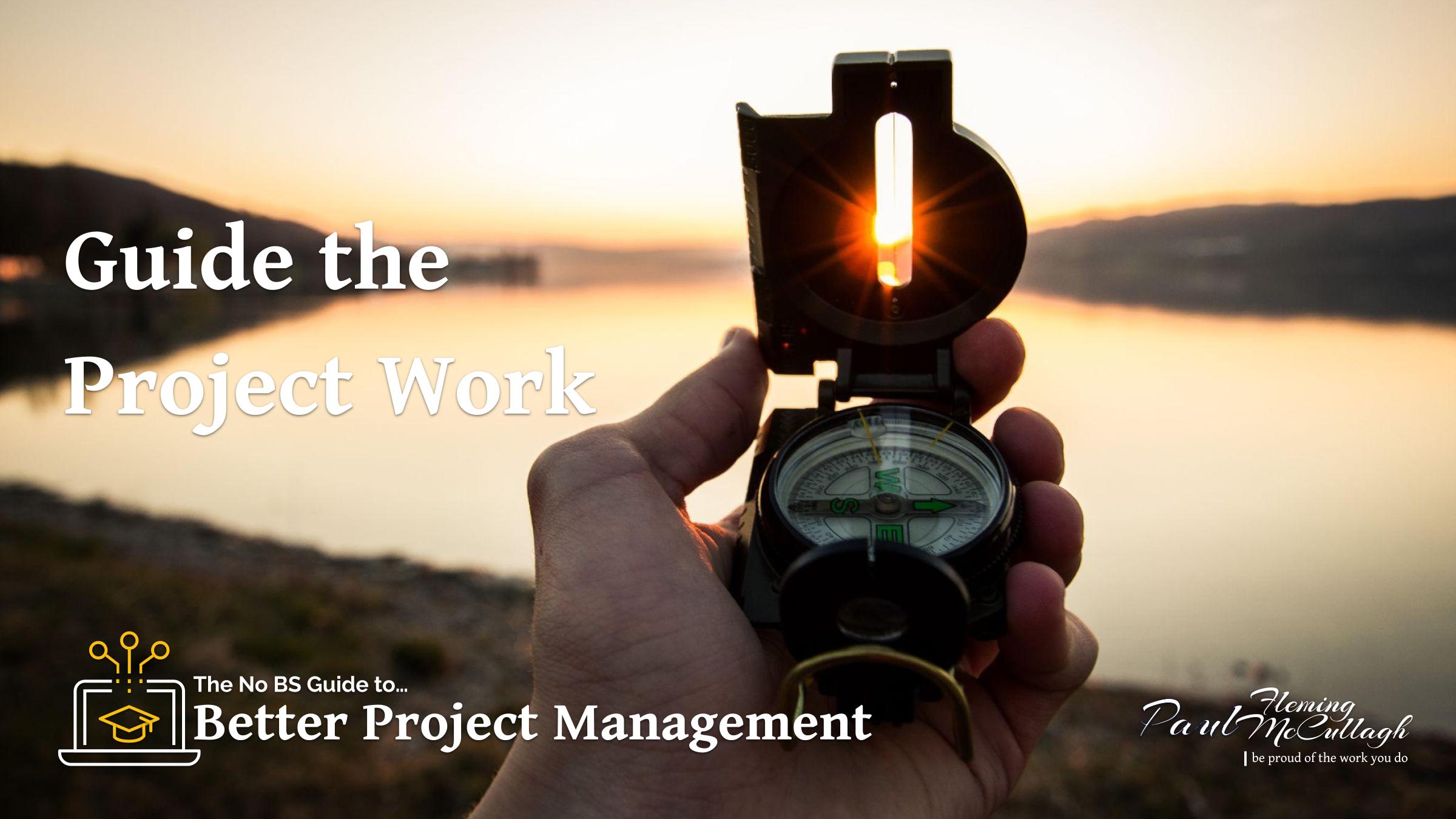
Guide the Project Work
You and your team are acting on your approved and achievable plan.
Everyone has confidence in the project because there are no surprises, problems are fixed at their root cause, and deadlines are being met.
- Build strong relationships with your team, sponsor, and stakeholders.
- Talk intelligently so the answers you provide and the regular project updates you give (the good news and the bad), are trustworthy.
- Anticipate changes to your plan – they’re going to happen. Understand why the deviations are happening and adjust as needed.
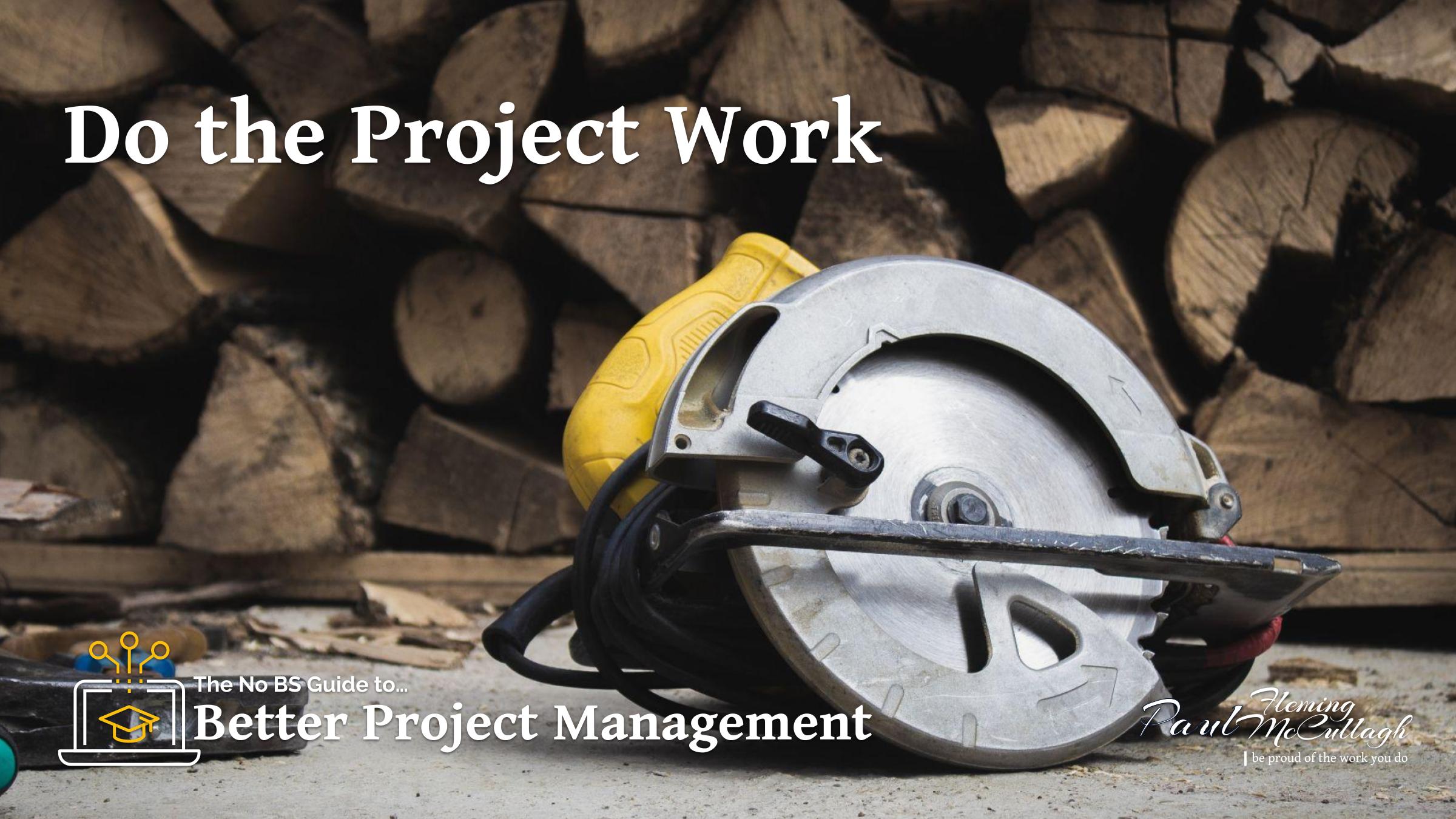
Do the Project Work
The team creates the deliverables and completes the user stories on time.
This is where the project manager has the lightest touch on the project and where the technical team has the greatest focus.

Deliver the Project Work
The team finishes the assigned work and delivers the end product for the sprint, phase, or project, as expected.
- Was the work done according to the agreed-to plan? Check.
- Does the delivered work meet requirements? Check.
- Is everyone in agreement that the work is complete? Check.
- Does the feature or product work? Check.
- Was this a successful project with the expected benefits being realized? Check.
Thinking about managing your work in this way applies to more than just project managers. It helps anyone whose work affects others and has a start, middle, and end.
Whether looking at the high level project plan and its progress, or down at the detailed level of a two-week sprint, Organize & Guide, Do & Deliver is effective at all levels of a project.
Organize & Guide, Do & Deliver. Got it! What Should I Do Next?
Programmers and software engineers will often perform a “sniff test” when peer reviewing each other’s work. If after a review the code looks bad and acts bad, then it smells bad. If it assaults the nostrils week after week? There are deeper problems.
In that same vein, give your project plan and current activities their own sniff test.
- Does everyone understand the work and how it needs to be done?
- Do you have strong relationships with all involved?
- Does everyone know where the project is doing well, and where it’s having problems?
- Is there confidence in you and your team’s abilities to get the job done?
How does your project smell? Do you need to take action, or is everything lightly perfumed with roses and lavender? Or sugar cookies and coffee?
If it smells, start making changes.
Final Thoughts: Better Project Management – Organize & Guide, Do & Deliver
Organize & Guide, Do & Deliver simplifies how you think about and manage your projects:
- Everyone involved understands what needs to be done, how it’s going to be done, and when it will be done by.
- Everyone has confidence in the project, because there are no surprises, problems get resolved, and the team can successfully create the deliverables and complete the user stories on time.
More No BS Guides for Practical Tips You Can Use Today
Additional Reading
- Project Management Institute’s definition of project management.
- PRINCE2 definition of project management
- The US Bureau of Labor Statistics notes the need for project management specialists will grow 7% between 2021 and 2031 – so it pays to know your stuff in a growing field. Plus, it’s fun to be a project manager.

